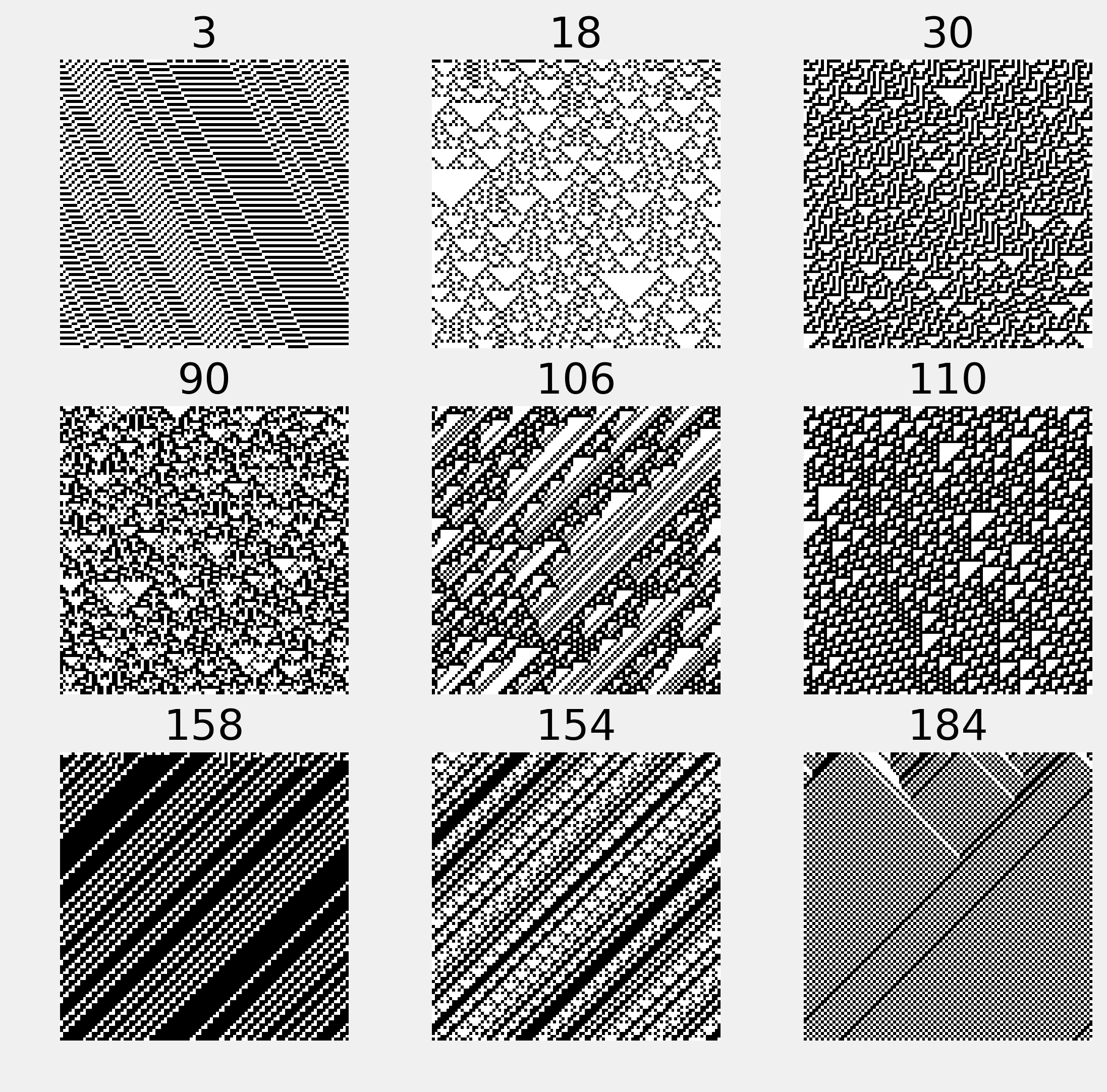Jupyter Snippet CB2nd 02_cellular
Jupyter Snippet CB2nd 02_cellular
12.2. Simulating an elementary cellular automaton
import numpy as np
import matplotlib.pyplot as plt
%matplotlib inline
u = np.array([[4], [2], [1]])
def step(x, rule_b):
"""Compute a single stet of an elementary cellular
automaton."""
# The columns contains the L, C, R values
# of all cells.
y = np.vstack((np.roll(x, 1), x,
np.roll(x, -1))).astype(np.int8)
# We get the LCR pattern numbers between 0 and 7.
z = np.sum(y * u, axis=0).astype(np.int8)
# We get the patterns given by the rule.
return rule_b[7 - z]
def generate(rule, size=100, steps=100):
"""Simulate an elementary cellular automaton given
its rule (number between 0 and 255)."""
# Compute the binary representation of the rule.
rule_b = np.array(
[int(_) for _ in np.binary_repr(rule, 8)],
dtype=np.int8)
x = np.zeros((steps, size), dtype=np.int8)
# Random initial state.
x[0, :] = np.random.rand(size) < .5
# Apply the step function iteratively.
for i in range(steps - 1):
x[i + 1, :] = step(x[i, :], rule_b)
return x
fig, axes = plt.subplots(3, 3, figsize=(8, 8))
rules = [3, 18, 30,
90, 106, 110,
158, 154, 184]
for ax, rule in zip(axes.flat, rules):
x = generate(rule)
ax.imshow(x, interpolation='none',
cmap=plt.cm.binary)
ax.set_axis_off()
ax.set_title(str(rule))
